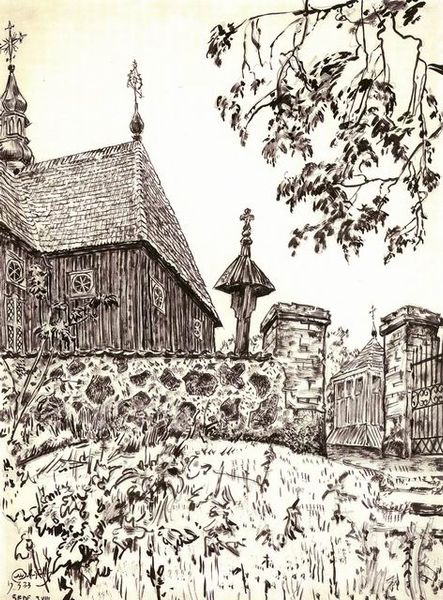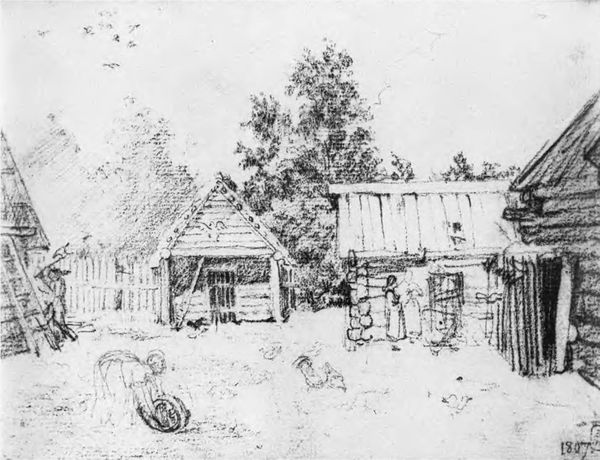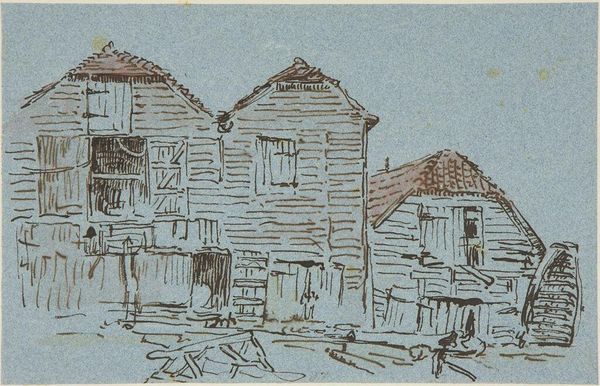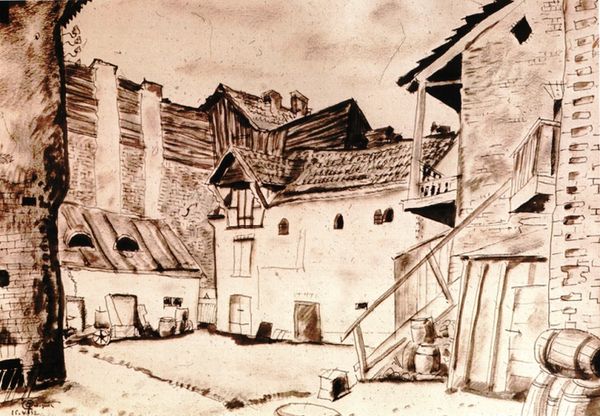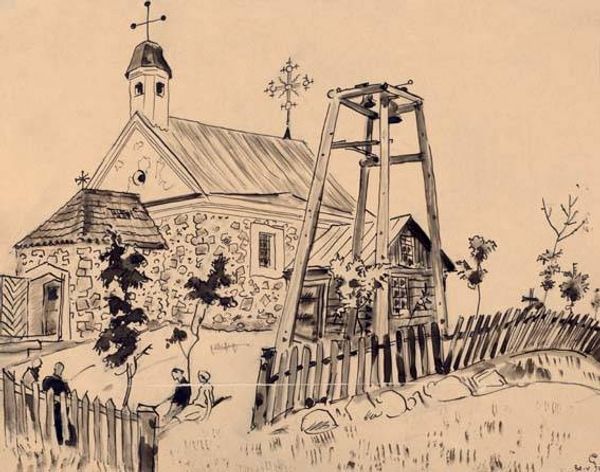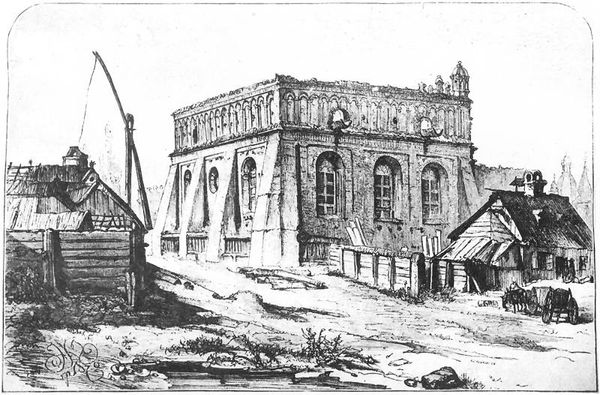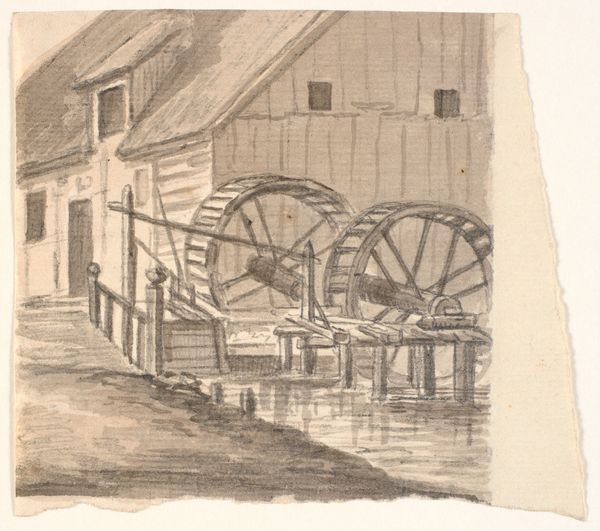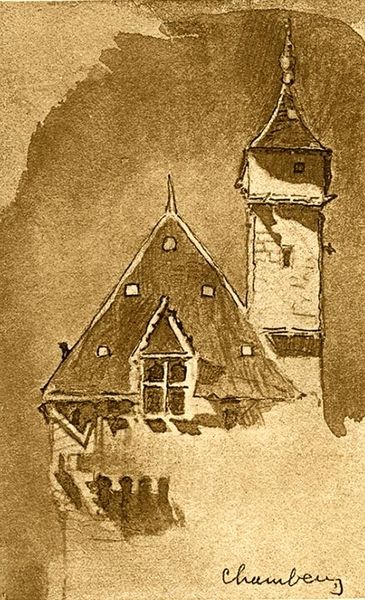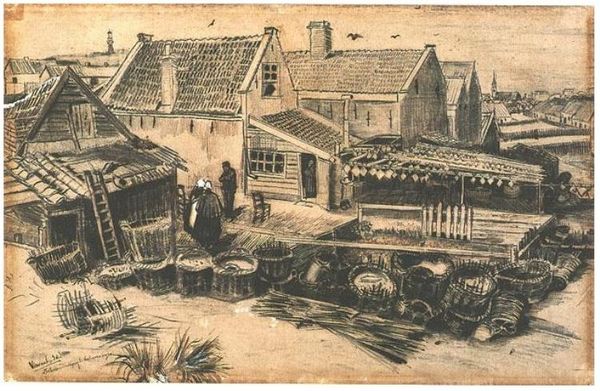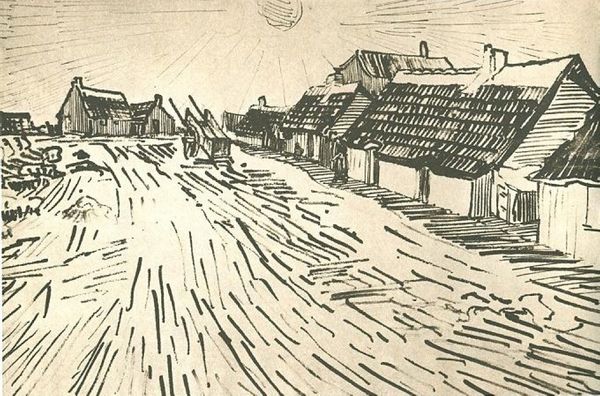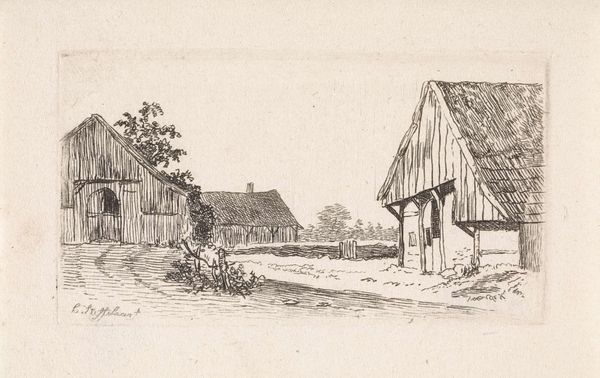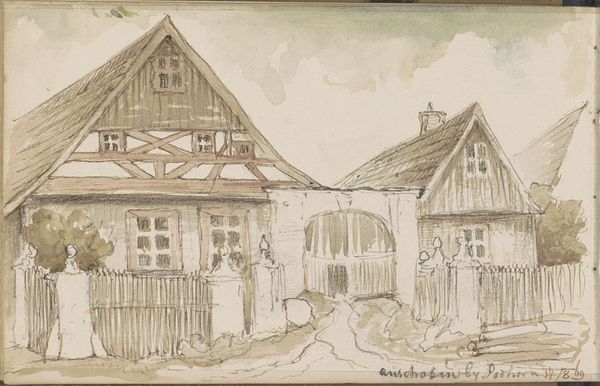
architecture
#
pen and ink
#
architectural sketch
#
sketch line
#
mechanical pen drawing
#
pen sketch
#
house
#
linework heavy
#
sketchwork
#
sketch
#
pen-ink sketch
#
arch
#
pen work
#
architecture
#
initial sketch
#
building
Copyright: Mstislav Dobuzhinsky,Fair Use
Curator: Here we have Mstislav Dobuzhinsky’s pen and ink drawing, "Synagogue," housed here at the Lithuanian Art Museum in Vilnius. Editor: Immediately, I get a sense of hushed stillness from this sketch, like holding a faded photograph that’s just resurfaced. Curator: Dobuzhinsky, a prominent figure in the early 20th-century Russian art scene, was deeply interested in urban themes. This work, though seemingly simple, captures the social landscape of Jewish communities in Eastern Europe, reflecting his ongoing exploration of place and memory. Editor: I love how he uses heavy linework to bring out the texture of the wood. The whole thing teeters with a gothic quality, a fairy tale that’s slightly unsettling, what strikes you the most here? Curator: The image's historical resonance moves me—as an artistic echo of cultural history rather than its literal recording. Its preservation challenges our contemporary experience where rapid modernization threatens cultural heritage. Editor: It also hits this really vulnerable note; Dobuzhinsky sketched with an emotionality so clear. Does that speak to a yearning or just capturing something truly raw from this region’s complicated, difficult histories? Curator: I think the two ideas intertwine. As much as it is about aesthetic observation, there’s always a commentary on shifting socio-political landscapes. An urban, architectural portrait becomes a vessel of communal memory and identity when seen through such historical lens. Editor: Beautifully said! You know, even knowing nothing about that, I could feel that narrative quality so deeply… And perhaps in that way, beyond what buildings are actually drawn or which historical meanings those structures have contained for others, they become reflective objects for our own lived-in-ness. Thank you! Curator: Indeed. It showcases how our interpretations are constantly colored by experiences and cultural insights, thereby deepening any engagement. A potent demonstration.
Comments
No comments
Be the first to comment and join the conversation on the ultimate creative platform.
